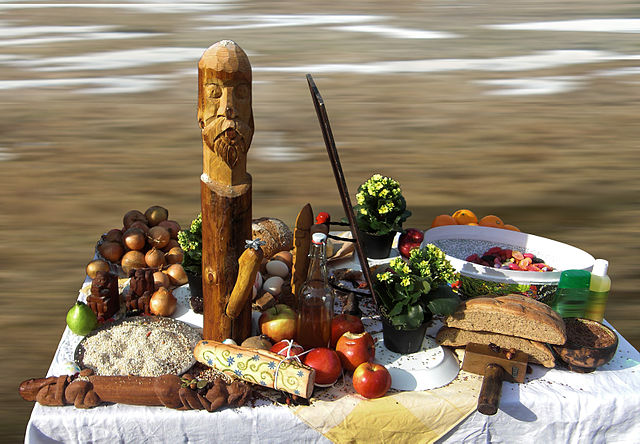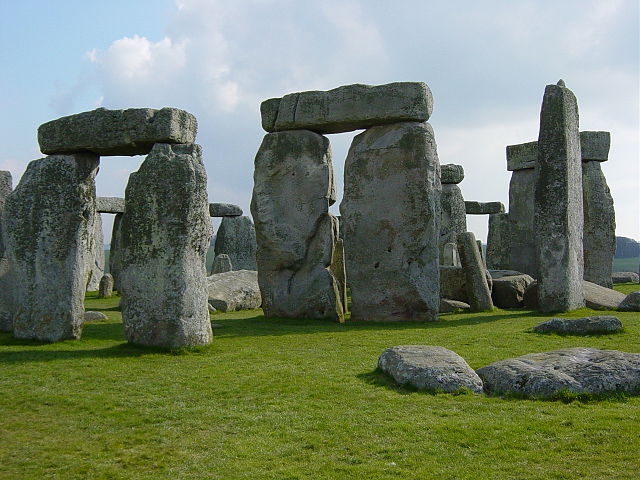Modern paganism, also known as contemporary paganism and neopaganism, is a type of religion or family of religions influenced by the various historical pre-Christian beliefs of pre-modern peoples in Europe and adjacent areas of North Africa and the Near East. Although they share similarities, contemporary pagan movements are diverse and as a result, they do not share a single set of beliefs, practices, or texts. Scholars of religion often characterise these traditions as new religious movements. Some academics who study the phenomenon treat it as a movement that is divided into different religions while others characterize it as a single religion of which different pagan faiths are denominations.
Heathen altar for Haustblot in Björkö, Sweden. The larger wooden idol represents the god Frey.
A Heathen shrine to the god Freyr, Sweden, 2010
The Parthenon, an ancient pre-Christian temple in Athens dedicated to the goddess Athena. Strmiska believed that modern pagans in part reappropriate the term "pagan" to honor the cultural achievements of Europe's pre-Christian societies.
Samogitian Sanctuary, a reconstruction of a medieval pagan observatory in Šventoji, Lithuania used by the modern Romuvans
Paganism is a term first used in the fourth century by early Christians for people in the Roman Empire who practiced polytheism, or ethnic religions other than Judaism. In the time of the Roman Empire, individuals fell into the pagan class either because they were increasingly rural and provincial relative to the Christian population, or because they were not milites Christi. Alternative terms used in Christian texts were hellene, gentile, and heathen. Ritual sacrifice was an integral part of ancient Graeco-Roman religion and was regarded as an indication of whether a person was pagan or Christian. Paganism has broadly connoted the "religion of the peasantry".
Depiction from 1887 showing two Roman women offering a sacrifice to the goddess Vesta
Reconstruction of the Parthenon, on the Acropolis of Athens, Greece
Some megaliths are believed to have religious significance.
Children standing with The Lady of Cornwall in a neopagan ceremony in England








